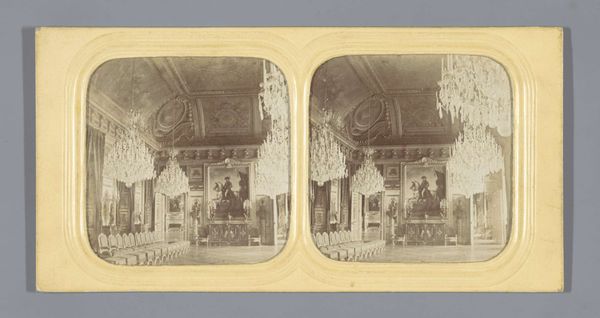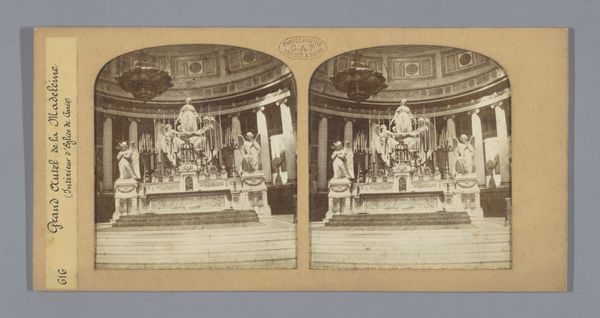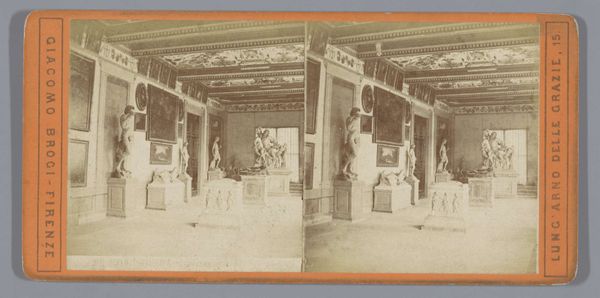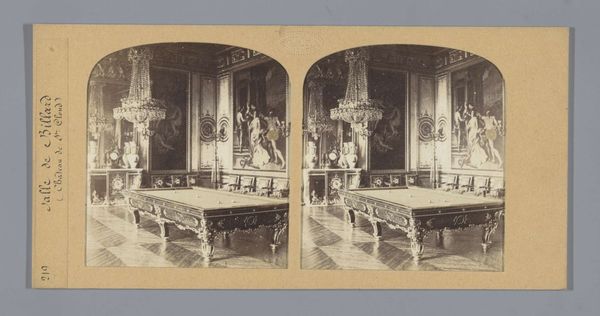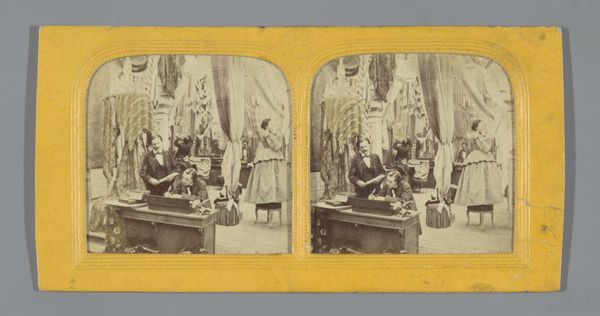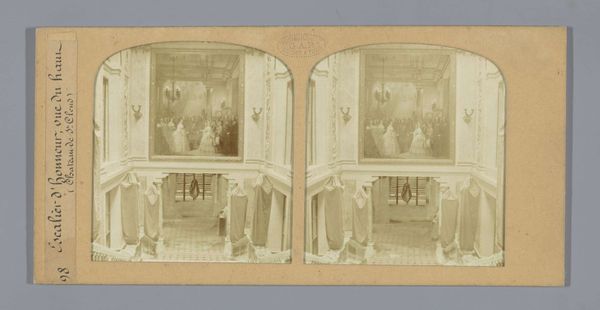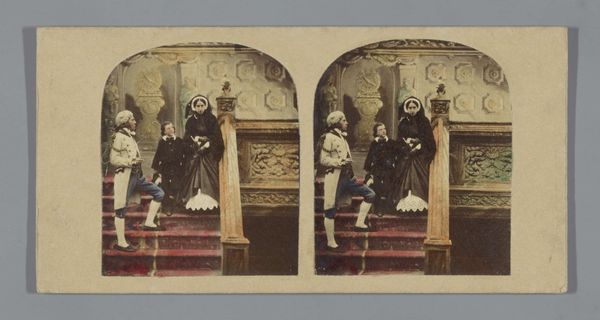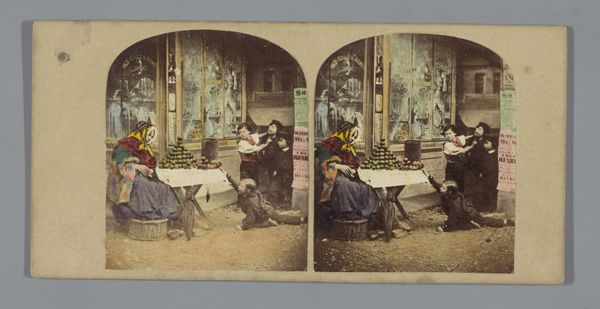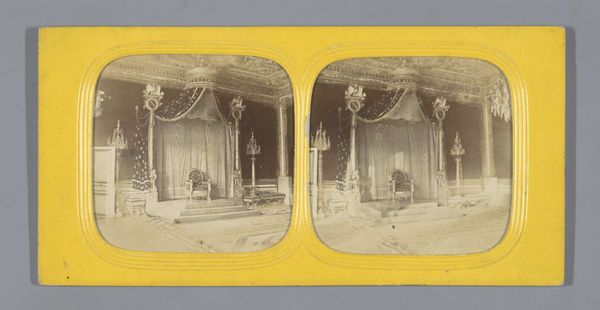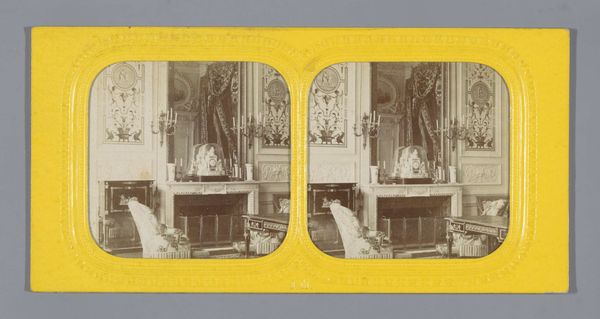
photography
#
portrait
#
photography
#
genre-painting
#
watercolor
#
realism
Dimensions: height 83 mm, width 175 mm
Copyright: Rijks Museum: Open Domain
Editor: So, here we have "Gezicht op dinerende mensen in Cupid's restaurant," dating back to between 1854 and 1859. It’s an early photograph, a stereograph actually, and it depicts a group of people dining, presumably at Cupid's Restaurant. I find the almost theatrical staging fascinating. What stands out to you about this piece? Curator: What interests me most is the social and material reality this image captures and, inevitably, constructs. Look at the props: the carefully arranged tables, the signage, even the clothing. These elements speak to a rising bourgeois class eager to display their affluence. Don’t you find it compelling how photography, even at this stage, was implicated in shaping social identities and aspirations? What kind of labor and means of production do you think it took to create this seemingly simple photograph? Editor: Absolutely. Thinking about the process, I guess the cost of photography back then would have immediately made it a tool for a certain class. There’s a stark contrast, too, between the very formal scene and what I assume would be quite a complicated and involved process to capture it. Does that tension say something more about what photography represented at the time? Curator: Precisely! Consider the role of the photographer, a skilled laborer mediating this whole scene. They were offering not just a likeness, but access to a symbol of status. Think, too, about the chemical processes involved, the paper, the hand-colouring that might have been added. Photography blurred the line between art and craft and became a powerful engine for mass visual culture. What do you think this particular photographic format, stereography, adds to our understanding? Editor: That's so interesting! I never really considered how much labour goes into photography. And stereography creates a sense of depth. Almost like these diners exist in our space, heightening the illusion. Curator: Exactly. It makes us more complicit as viewers and consumers of this moment, prompting further inquiry into its means of production. Considering these aspects, I think we can conclude that the picture makes us understand photography’s dual function: to immortalize a moment while becoming itself a consumable, and very carefully constructed, commodity. Editor: I agree, framing the artwork this way definitely helps to illuminate some previously invisible forces at play! Curator: It truly makes one reflect on the complicated social economy of images.
Comments
No comments
Be the first to comment and join the conversation on the ultimate creative platform.


